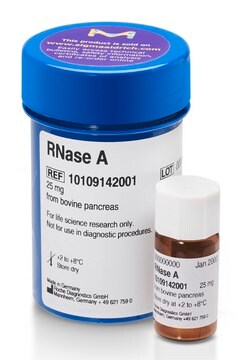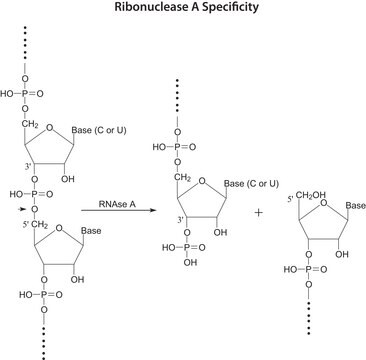537059
Propidium Iodide
Membrane impermeable DNA intercalator.
Sinónimos:
Propidium Iodide
About This Item
Productos recomendados
Nivel de calidad
Formulario
solid
fabricante / nombre comercial
Calbiochem®
condiciones de almacenamiento
OK to freeze
protect from light
color
dark red
entrada
sample type intact cells
fluorescencia
λex ~536 nm
λem ~617 nm
Condiciones de envío
ambient
temp. de almacenamiento
2-8°C
InChI
1S/C27H33N4.2HI/c1-4-31(3,5-2)17-9-16-30-26-19-22(29)13-15-24(26)23-14-12-21(28)18-25(23)27(30)20-10-7-6-8-11-20;;/h6-8,10-15,18-19,29H,4-5,9,16-17,28H2,1-3H3;2*1H/q+1;;/p-1
Clave InChI
XJMOSONTPMZWPB-UHFFFAOYSA-M
Descripción general
Acciones bioquímicas o fisiológicas
Membrane impermeable DNA intercalator
Advertencia
Nota de preparación
Reconstitución
Otras notas
Crompton, T., et al. 1992. Biochem. Biophys. Res. Commun. 183, 532.
Darzynkiewicz, Z., et al. 1992. Cytometry13, 795.
de Caestecker, M.P., et al. 1992. J. Immunol. Methods154, 11.
Pollice, A.A., et al. 1992. Cytometry13, 432.
Información legal
Palabra de señalización
Warning
Frases de peligro
Consejos de prudencia
Clasificaciones de peligro
Muta. 2
Código de clase de almacenamiento
11 - Combustible Solids
Clase de riesgo para el agua (WGK)
WGK 3
Punto de inflamabilidad (°F)
Not applicable
Punto de inflamabilidad (°C)
Not applicable
Certificados de análisis (COA)
Busque Certificados de análisis (COA) introduciendo el número de lote del producto. Los números de lote se encuentran en la etiqueta del producto después de las palabras «Lot» o «Batch»
¿Ya tiene este producto?
Encuentre la documentación para los productos que ha comprado recientemente en la Biblioteca de documentos.
Los clientes también vieron
Nuestro equipo de científicos tiene experiencia en todas las áreas de investigación: Ciencias de la vida, Ciencia de los materiales, Síntesis química, Cromatografía, Analítica y muchas otras.
Póngase en contacto con el Servicio técnico









